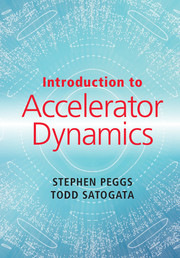Even the highest-energy proton linear accelerators, with kinetic energies of order 1 GeV, are not fully relativistic. Their β = v/c values are significantly less than one. This is in stark contrast to electron linacs, in which β ≈ 1 even for energies of only a few MeV. Because of this, the dominant dynamical issues are different in proton and electron linacs. Also, the menagerie of RF structures that accelerate and manipulate protons – each tuned for a different range of β values – is very diverse.
The technology map of Figure 13.1 shows some of the RF structures typically found in a modern large proton linac. Not shown are other common technologies, including Drift Tube Linacs (DTL), side coupled linacs, quarter wave resonators and double and triple spoke resonators. Fortunately an introduction to proton linac dynamics is possible without a detailed understanding of these diverse technologies, which are more fully discussed elsewhere [36, 57]. Instead it is possible to build on the generic discussion of pill-box and elliptical cavities in Chapter 7, adding only one instructive special case, the Radio Frequency Quadrupole (RFQ).
Even low energy proton rings – for example 250 MeV cancer therapy synchrotrons – need an injection linac, although these typically have maximum kinetic energies of less than 10 MeV. More interesting and comprehensive are high power linacs, such as the MW-class linacs listed in Table 13.1, which are used to generate neutrons for material science experimentation (ESS and SNS), to create rare isotopes for nuclear physics (FRIB), or to provide protons for high energy physics experimentation (PIP-II). In all four cases the hadron beam is absorbed in a target with a specialised design serving the need at hand.
This chapter does not discuss collective motion dynamics, or any of the related conceptual tools (such as wakefields and impedances), except to briefly introduce space charge as a phenomenon that is vital to linac design, and which connects to the beam-beam discussion in Chapter 15. Rather, the focus is on single-particle dynamics, especially the longitudinal phase space behaviour that dominates single-pass linacs, in contrast to the transverse dynamics that usually dominate multi-pass circular rings.
